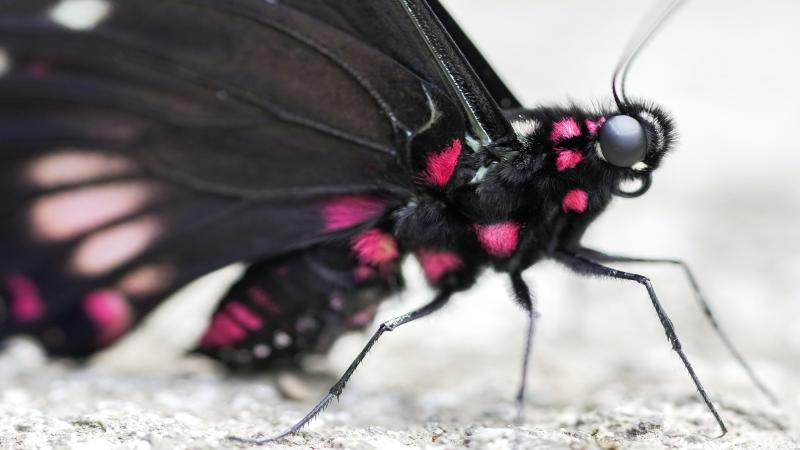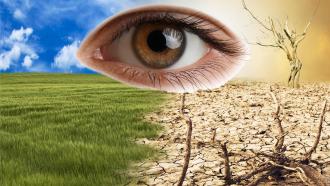
Image by Jeremy Zero via Unsplash
The genetic makeup of butterflies and moths is similar. However, while most butterflies, which are a kind of moth, fly by the day, other moths are active at night. They possess different eyes that adapt to the surrounding lights, ranging from dazzling light to complete darkness. While the butterflies’ eyes enhance the clarity of images in bright light conditions, other moths’ eyes have evolved to help them see clearly in dim light settings. Hence, butterflies are unable to see clearly in the dark, while moths end up viewing the world a bit blurred.
All moths engage in swift flight manoeuvres, and their eyes can sense the slightest change in their environment. What causes their eyes to perform the same functions under different light conditions is not clear to scientists. Recently, researchers have studied whether the butterflies and moths’ activity patterns at different times of the day can explain the difference in how their eyes function. The study, by researchers from the National Centre of Biological Sciences (NCBS), Tata Institute of Fundamental Research, Bengaluru and Indian Institute of Science Education and Research Pune (IISER-Pune), was published in the Journal of Comparative Physiology A. It was supported by the Air Force Office of Scientific Research (AFOSR) and the Department of Science and Technology (DST), the Government of India.
To facilitate seeing, light-detecting cells in the retina send a signal to the brain about the ambient visual environment. An object appears to flicker when the eyes’ light-detecting cells can register the dark and light periods from an irregular light source. Sometimes, the interval between the dark and light periods is so small that eyes fail to detect it, and an individual perceives even a flickering object as a regular light source. Scientists refer to the frequency at which eyes fail to detect an actual flicker as the ‘Flicker Fusion Frequency’ or the FFF. As the FFF can vary across species, researchers often use it to compare the visual abilities of animals. The scientists compared the FFF of the butterflies and the moths.
To do so, the researchers collected live butterflies and moths from the gardens of the NCBS campus. Their sample comprised day-flying, evening-flying, and night-flying species of these insects.
“We initially measured flicker fusion frequencies just as a quick fun activity,” says Sanjay Sane, a Professor at NCBS and an author of the study. “In due course, as many of these insects fly past our backyards, we developed this study,” he adds. The researchers, however, depended on an opportunistic sampling of butterflies and moths in the NCBS backyard.
The researchers studied how the eyes of butterflies and other moths perceive a light source at various rates of flicker. They observed that the FFF is significantly different for the two groups. Butterflies’ eyes are better at detecting objects with a higher rate of flickering than moths’ eyes. Additionally, evening-flying butterflies can detect flickering in an even broader range of frequency.
“Although their eyes are not as good as ours, their ability to sense changes in their environment is superior, and hence their reactions much faster,” says Sanjay.
The scientists found that the ability to detect a flicker did not depend upon whether they are day-flying or night-flying, but whether they are butterflies or other moth species. The study suggests that as the butterflies and other moth species have diverged from their common ancestors during evolution, their eyes evolved differently. As butterflies adapted to day-light lifestyles, their eyes got more sensitive to change in ambient light. “If a moth has evolved a diurnal lifestyle, it still has to function with a sensitivity of eyes that is best under low light levels,” explains Sanjay. It points out that evolution happens continuously and has not yet optimised every organ for its current role.
The researchers were able to compare the different groups by studying them simultaneously. Fossil records or comparisons of genes would be insufficient to make such a comparison because physiological or behavioural differences are often not captured when animals are not alive.
“Our study highlights the importance of comparative work across all levels –– including physiological –– to assess how evolutionary processes work,” Sanjay signs off.
This article has been run past the researchers, whose work is covered, to ensure accuracy.






